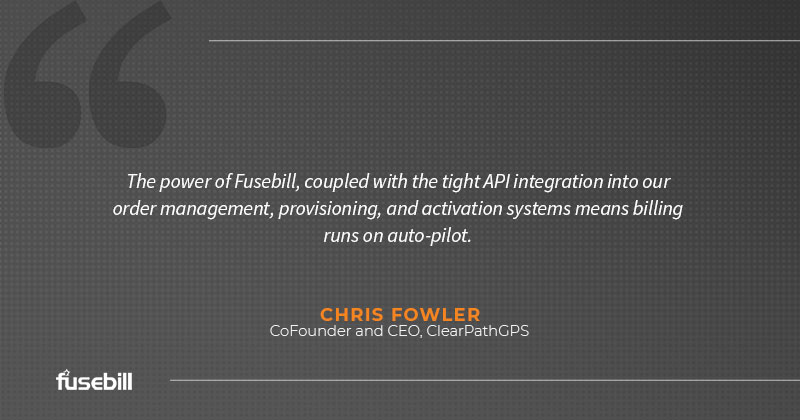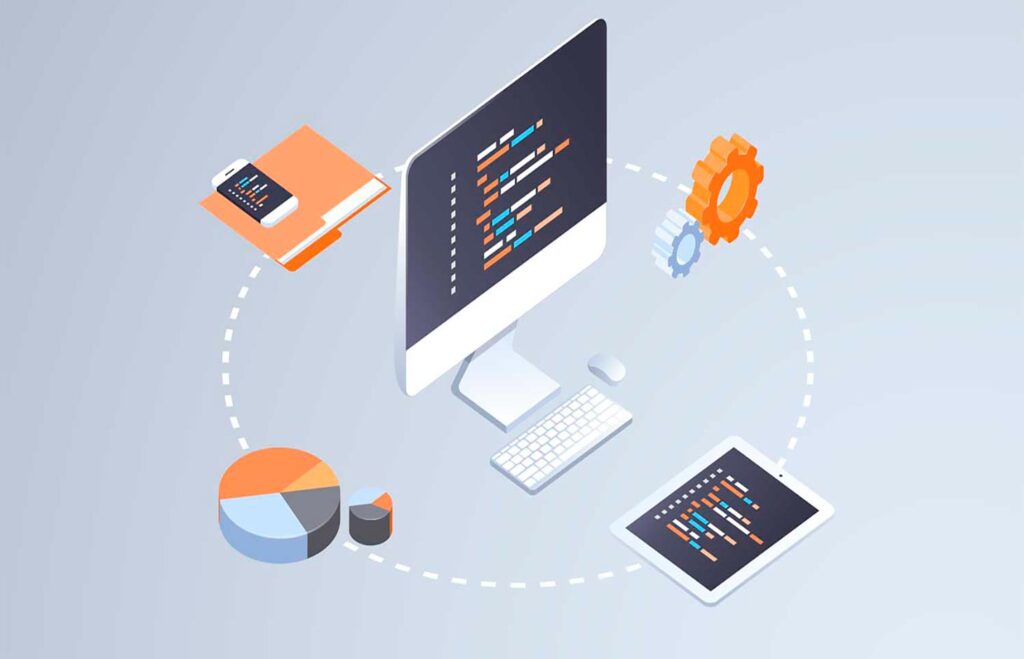One of the most obvious yet impactful reasons why many SaaS businesses digitally transform their billing system is to automate and enhance more processes.
Businesses that are still relying on legacy and manual-heavy solutions are spending anywhere from 25 to 40 hours every month on billing and finance related tasks that could be automated.
Reducing manual work not only frees up time to prioritize other strategic business operations but it also helps to eliminate potentially costly human errors. This in turn creates business enhancements and efficiencies that lead to increased revenue.
For some in the SaaS space, how their billing solution achieves optimal automation is just as important as why.
While having a comprehensive and automated billing system is a modern day must for SaaS, if your platform also offers your team robust API with supportive documentation, it opens the door to achieve even more.
API in The Context of SaaS Billing
Like with all APIs, your billing system’s API is its language to describe how your SaaS business can connect to it, perform certain tasks, and get certain information.
Here at Stax Bill, we automate your billing and we give you the user interface to manage your customers and subscriptions,” said Justin Jordan, Software Engineer at Stax Bill. “Our API takes that automation and lets you customize it as you see fit. It’s a way for your servers to communicate with our servers without needing a human there to take actions themselves.”
For example, let’s say your business tracks customer usage as part of a subscription plan. Through the API, your usage-tracking tool can communicate this critical data to your billing system automatically for accurate invoicing.
Your subscription billing system then takes this data and applies it to existing automated operations. This might include generating a usage-based invoice, adding any other subscription and one-time charges, and collecting payment on a predetermined billing schedule.
Someone on your billing team might then like to know immediately whenever a payment fails for one of your usage-based subscription customers. That type of notification can also be automatically triggered through webhook to communicate with your own API. You can then automate a response to that notification by taking actions in your billing system through its API.
An automated billing system with a powerful REST-based API gives your SaaS business the added flexibility to get more creative with the ways you use and automate your subscription and financial data in line with what’s important to your business.
Your Automated Billing System API Unlocks Opportunities
While the right automated billing system will digitally transform your SaaS business’s financial operations in many meaningful ways, great API can help you extend the benefits even further.
1. Increase speed of operations and data flow.
API communication happens in near real-time. So as data becomes available, it can be automatically pushed where it needs to go. This means processes that once took days or weeks can now take place in real time.
Imagine what that means for an Internet of Things (IoT) SaaS business that provides commercial telematics services. That SaaS business likely needs to track data from its clients’ accounts, its clients’ customer accounts, and the company that controls the GPS devices.
If this is a usage-based subscription, billing needs to start, stop, and be invoiced for possibly thousands of devices as they turn on, get used, and turn off.
That’s complex…and nearly impossible to manage manually.
While not every SaaS business has needs quite that complex, all can benefit from process automation and data flow capabilities of a billing system with a flexible API.
2. Leverage Triggers and Layer on Business Rules.
Many businesses have very specific rules for how they want things to be done when it comes to billing and subscription management. They do or don’t want end users to be able to do certain things under certain conditions.
For example, you might want to prevent your end users with unpaid balances of over a certain amount from making any new purchases.
While any unique rules and preferences your business has won’t inherently exist in your automated billing system, you can use API queries to check conditions and ensure specific actions.
With a flexible API, you can use also use data to trigger a wide range of billing-related processes based on business logic or to notify end-users to take an action.
For example, a SaaS business might auto-apply store credit in particular circumstances. Or it may use the API to push out subscription expiry so it can inform end users how many days they have left until their subscriptions are set to expire.
It’s much easier to apply these sorts of complex rules programmatically and ensure certain checks and actions, whereas they’d be complex and potentially error prone with human intervention.
3. Enhance Customers’ Experience and Ability to Self-manage.
- Build a seamless purchase experience. With robust API capability, you can host the complete end-to-end purchase experience on your business’s website with no redirections at the point of sale.
Customers can learn about your products and/or services, select plans and potentially hardware, review their total cost, and make their purchase all on your site.
This strengthens the customer relationship with your brand and provides a much more seamless experience. It also circumvents the risk of dinging customer trust by openly rerouting them to another site for payment processing.
- Create on-site self-service portals (SSPs). Once your prospects become customers, another API benefit is the ability to create customized dashboards and customer self service portals (SSPs).
You can design your own dashboard and portal that matches your CSS and styling and host it on your own site. Using transparent direct, your customers interact with your website and your web pages. They can be shown details about their account such as their balance, their invoices, and their subscriptions, and any updates and payments that happen on your pages are pushed back to your billing system, all via API.
From the customer point of view, they never leave your site—which is obviously a more desirable user-experience. And for your SaaS business, customers manage their own journey and there’s no need for any manual data transfer.
4. Automate Custom Granular Reporting.
Reporting dashboards, exportable CSVs, and searchable customer lists come standard with comprehensive billing systems. APIs add the ability to dig in even further and automate more complex filtering and reporting.
For example, if your SaaS business has thousands of customers, you don’t necessarily always want to pull that entire list.
You can use range queries to filter that list and get the just customers you want. Maybe that’s customers that were active within a specific time-period with an MRR over $500, customers that are overdue under a specific sales tracking code, or customers with an outstanding balance over $100—
—anything you want, you’ve got it. What’s more, you can set these custom reports to automatically export to whoever needs them on a recurring basis.
5. Programmatically Enable Bulk Actions.
Taking bulk actions across your entire account can be extremely tedious and error prone if they need to be performed by humans.
Say your team plans to increase pricing across your entire catalog at set intervals and push that pricing out to all your subscribers. Depending on how often you increase prices, this recurring process could easily become an error-prone drain on time and resources. And any mistakes could easily mean recurring revenue leakage.
If your catalog lives on a subscription billing platform with a strong API, you can set schedule bulk pricing changes to occur automatically. And that’s just one example.
“If you want to collect a bunch of payments and micromanage when those payments happen, you can create a bulk payment job,” said Jordan. “You’d feed data into our API, we’ll kick off that job and then automatically set it to process however many payments you want on your customers using whatever specific logic you want to select which customers.”
Bulk jobs involving payments for specific customer types, write-offs, and more are easier with a flexible API built for the automatic push-and-pull of business data.
This speeds up operations and you can be confident the outcome is going to be correct, whereas humans can easily make errors that are hard to detect when doing bulk actions.
These types of power-user features are especially useful if you happen to have a large end-user base.
For More Agile Subscription Billing, Look for a Flexible API
Adaptive automated billing systems that are built on flexible APIs enable automation to extend beyond the box.
If your SaaS team has the engineering resources in-house to work within your billing system’s API, it unlocks unlimited opportunities to create custom processes and solutions in line with your business’s specific needs.
One of the reasons why Stax Bill has such flexible API is because we consume our own API to do all the things our customers do with it. We use it too,” says Dave Larkin, a Software Engineer at Stax Bill.
“From the get-go, we built up our API because we needed to do things in our admin. It has been a way of thinking about our API to ensure we build it out in a way that’s most useful.”

And at Stax Bill, we make sure your business achieves exactly what you’re trying to accomplish through billing so you can scale without limitations.
Greater automation and efficiency are core tenets of the digital transformation era we find ourselves in today. Make sure your billing system grants you the flexibility and agility you need to allow your SaaS business to excel.
FAQs about Automated Billing System
Q: What is the significant role of an automated billing system in a SaaS business?
An automated billing system in a SaaS business primarily automates and optimizes various billing-related tasks, enhancing internal efficiencies by minimizing manual work and the potential for human errors. This efficiency leads to free time being utilized for focusing on strategic business operations and increases revenue.
Q: How does automation in the billing system eliminate potential human errors?
Automation in a billing system takes over manual tasks such as invoicing, tracking subscription charges, collecting payments, and more, eliminating the possibility of human errors resulting from inaccuracies and oversights during manual processes.
Q: Can you explain the role of a robust API in an automated billing system?
A robust API in an automated billing solution allows for customization of the platform according to specific business requirements. It facilitates the connection of different applications and enables seamless data transfer, communication, and task completion without human intervention.
Q: How can a REST-based API influence my SaaS business’s billing system?
A REST-based API can provide your SaaS business with flexibility in how you use and automate your subscription and financial data, aligning with your business’s needs. It enables tasks like real-time data transfer, improving efficiencies, and cutting down processing time from days or weeks to real time.
Q: Does automation extend to creating custom processes in my billing system?
Yes, if your SaaS team has the engineering resources in-house, working with your billing system’s API can unlock unlimited opportunities to create custom processes and solutions specific to your business’s needs.
Q: How can my end-users benefit from a billing system with a robust API?
End-users can experience seamless services such as self-service portals powered by an API. These portals can give customers access to their account details, invoices, subscriptions, and updates, all of which are synced with your billing system in real-time.
Q: Can I customize the purchase experience for my customers with a robust API?
Yes, with a robust API, you can provide a complete end-to-end purchase experience on your website. Customers can learn about your products or services, choose plans, review their total cost, and make purchases, all without being redirected to another site.
Q: Can the API enhance the efficiency of my reporting process?
Absolutely. An API can add to your ability to perform complex filtering and reporting tasks. For example, you can use an API to filter customer lists, produce custom reports, and set automatic recurring exports of these reports. This automation increases accuracy and saves time.
Q: Are bulk actions manageable through an automated billing system’s API?
Yes, an API can schedule and manage bulk actions across your accounts. These actions could include tasks like making bulk pricing changes or running bulk payment jobs, which would otherwise be time-consuming and prone to errors if performed manually.
Q: How can an automated billing system fast-track digital transformation for my SaaS business?
An automated billing system can greatly advance your SaaS business’s digital transformation by automating manual tasks, improving efficiency, and enabling a more seamless customer experience. By leveraging a robust API, you can customize your billing system to suit your specific business needs, thus optimizing your processes and boosting your growth prospects.







